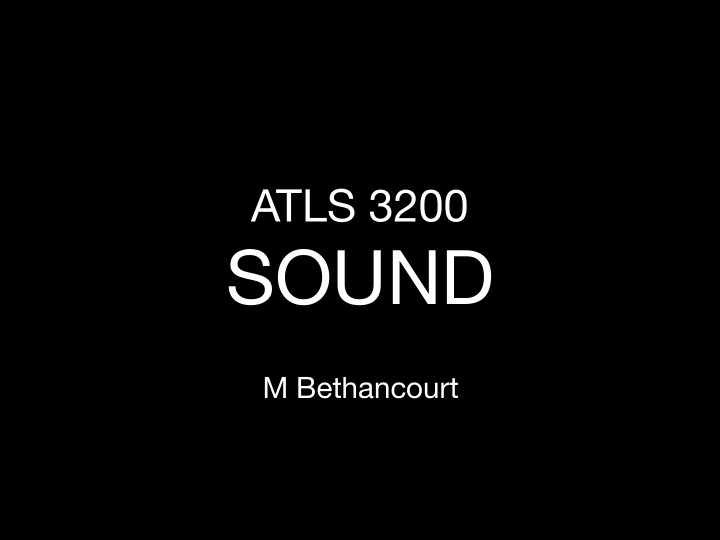



ATLS 3200 SOUND M Bethancourt
What is Sound?
Sounds as Physical Phenomena
Sounds as Organized Beauty
Sounds as Emotional Conduits
Sounds as Narrative Devices
Sounds as Immersive Tools
Sound as Mathematical Waves
Sounds have certain properties
Waves! Frequency, Amplitude, Shape
Frequency
Amplitude
Shape Sine, Square, Triangle, Sawtooth
Sound exists in time
How Does the Sound Change Over Time?
ADSR!
How Can Electricity Help us Make Sound
Additive Synthesis
Additive Synthesis is the process of creating new sound waves by combining one or more Sine waves together
Wave h1 h2 h3 h4 h5 h6 h7 h8 h9 Sine 1 0 0 0 0 0 0 0 0 Square 1 0 1/3 0 1/5 0 1/7 0 1/9 Triangle 1 0 -1/9 0 1/25 0 -1/49 0 1/81 Saw 1 1/2 1/3 1/4 1/5 1/6 1/7 1/8 1/9
Beats
When two waves are very close to the same frequency, they will shift in and out of phase giving the sensation of beats The Beats Per Second can be found by the di ff erence between the 2 frequencies 222Hz - 220Hz = 2 Beats Per Second
Subtractive Synthesis
Subtractive Synthesis is the process of e ff ecting your sound by removing certain frequencies
High-Pass Filter Low-Pass Filter Band-Pass Filter Peak / Notch
Envelopes Amplitude Filter
Amplitude Modulation / LFO
Vibrato
FM Synthesis Frequency Modulation
Homework
Project: Sound Exercise 1: Analog Synthesis Create a synthesized sound using BEAP . Save the Max patch so that you may present your sound in class.
Recommend
More recommend